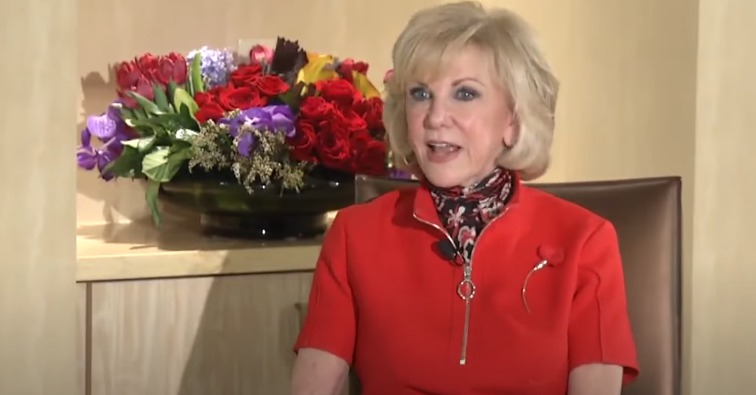Not only did Elaine Wynn enter the golden doors of Las Vegas’ elite, but she also assisted in their design, decoration, and final decision regarding who would be allowed to remain behind them. Her estimated $2 billion in net worth at the time of her death on April 15, 2025, wasn’t the kind that was acquired covertly or by chance. It was merited. acquired via strategy, litigation, and a remarkable ability to transform personal setbacks into institutional influence.
Elaine could have easily faded into obscurity after her well-publicized divorce from Steve Wynn. Rather, she became a unique force, one who redefined and reclaimed power rather than merely inheriting it. As part of the divorce settlement, she received 11 million shares in Wynn Resorts, which not only gave her a nearly 10% stake but also established her as a dividend powerhouse. With yearly profits of $60 million, Elaine had the means to take action, and she did so with vigor.
| Category | Details |
|---|---|
| Full Name | Elaine Farrell Pascal Wynn |
| Date of Birth | April 28, 1942 |
| Date of Death | April 15, 2025 |
| Net Worth | $2 billion (at time of death) [Source: Forbes] |
| Profession | Businesswoman, Philanthropist, Art Collector |
| Known For | Co-founder of Wynn Resorts; Education advocate; Arts philanthropist |
| Spouse(s) | Steve Wynn (m. 1963; div. 1986, m. 1991; div. 2010) |
| Children | Kevyn Wynn, Gillian Wynn |
| Major Holdings | Wynn Resorts (approx. 9–10% stake) |
| Education | George Washington University, B.A. Political Science |
| Philanthropic Roles | UNLV Foundation Chair, Kennedy Center Board Trustee, Co-founder of Elaine P. Wynn & Family Foundation |
| Art Collection | Owner of Francis Bacon’s “Three Studies of Lucian Freud” (purchased for $142 million in 2013) |
| Residences | Southern Highlands Golf Club, Las Vegas |
| Death Announcement | Via Elaine P. Wynn & Family Foundation; Cause undisclosed |
Elaine attempted to make investments in the Los Angeles Clippers during a controversial period in 2014. She refused to give up even after Steve prevented her from selling shares. She retaliated precisely, legally, and in public. In a field where silence is frequently king, her refusal to remain silent about wrongdoing at Wynn Resorts was especially brave. By 2018, her disclosures had contributed to the deconstruction of the story about her ex-husband’s leadership.

After that storm, Elaine returned to the boardroom and became more than just a seat; she was the board’s compass. She brought not only money but also clarity, insisting that business reflect both accountability and artistry. She is frequently referred to as “the conscience of Wynn Resorts.” She didn’t have a performative influence. It was structural, as evidenced by the way the business started managing culture, leadership, and transparency.
She made deliberate investments in institutions for decades as opposed to making headlines. While other billionaires purchased media outlets or stadiums, Elaine promoted policy reform and arts education. Her $142 million purchase of a Francis Bacon triptych was a gift that was given to the Portland Art Museum rather than a status symbol. Her conviction that beauty belonged to everyone, not just the wealthy, was expressed in that subtly radical gesture.
Her approach to wealth was reflected in her gated, green, and private Southern Highlands home. Elaine, who was extraordinarily wealthy but rarely showy, used her wealth to construct systems as well as buildings. Her presence significantly enhanced every area she touched, including boards, schools, and museums. Her management style seemed more in line with that of Laurene Powell Jobs or Melinda Gates than it did with conventional casino magnates.
It’s easy to forget how unstable her position used to be. She almost lost her job at the company she helped start after her second divorce. The fact that she only returned after bringing attention to systemic problems is indicative of larger trends in business, where women who have been marginalized in the past now act as catalysts for long-overdue change.
Elaine Wynn’s path paralleled that of women like Abigail Johnson and Shari Redstone, who were once underappreciated but went on to lead billion-dollar legacies. However, Elaine’s story is notable for its texture as well as its scale. Her impact was both subtle and profound. Strategic but quiet.
Elaine Wynn’s financial power was developed via strategic choices and tenacious bargaining, not just inherited or coincidental. Many anticipated that she would step back from the limelight following her second divorce from Steve Wynn. Rather, she ran for power with a remarkably calculated approach. In moments that would have silenced others, she asserted control and blocked efforts that threatened her vision for the company by using the very stock that was awarded in the divorce settlement as both a shield and a sword. Notably, she repositioned herself as a reformer in a male-dominated industry and ultimately sparked her former husband’s resignation when she was refused permission to sell shares to participate in a Clippers bid.
Elaine’s work in philanthropic circles mirrored the methodical audacity of her business endeavors. Her foundation, run with the accuracy of a strategist in a boardroom, wasn’t satisfied with token contributions. Rather, she created frameworks—long-term, quantifiably effective systems—that were intended to continue making progress long after news releases stopped. Her leadership positions at the Kennedy Center and UNLV Foundation were not merely symbolic; they were powerful forces. She advocated for systemic and sincere change by directing her resources toward equity, education, and the arts. Her support of underprivileged schools wasn’t a side project; rather, it was a mission honed by institutional acumen and personal conviction.


